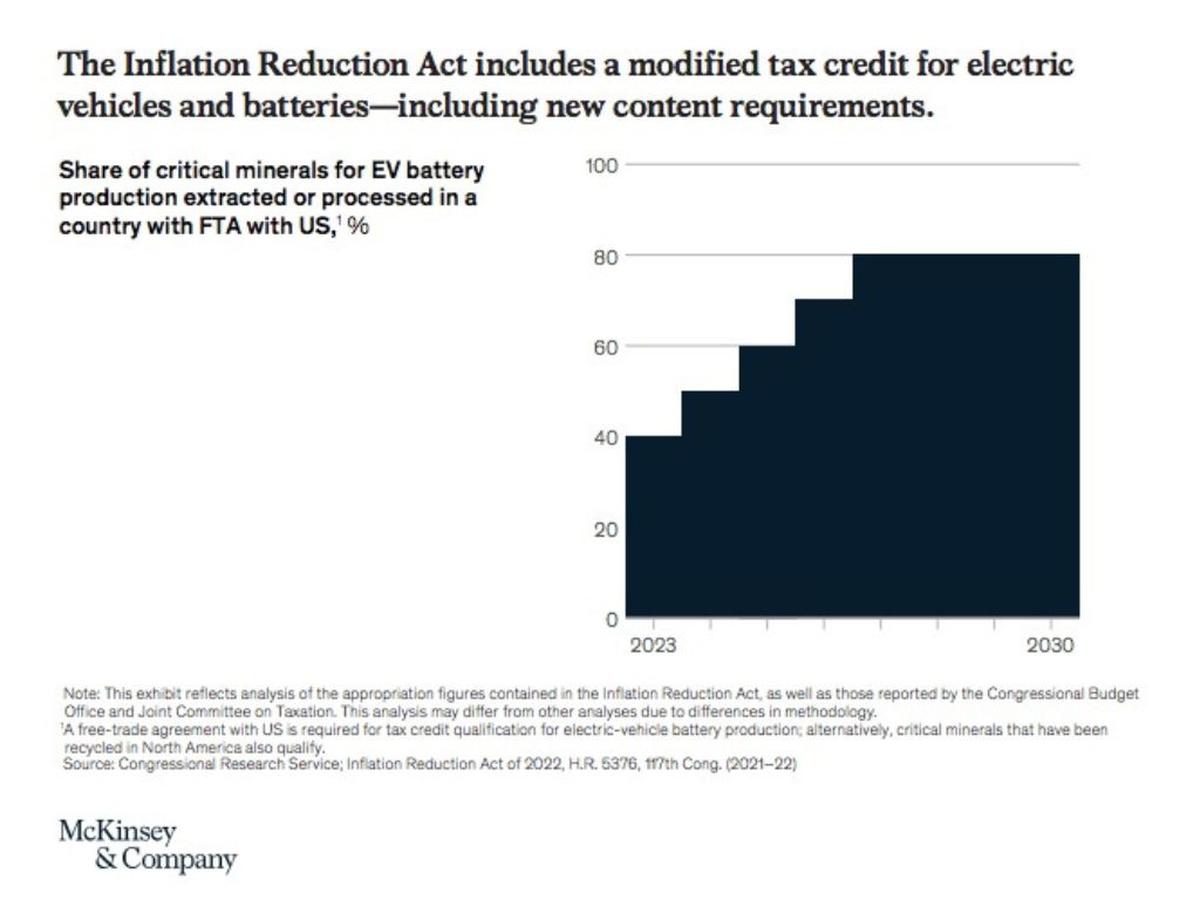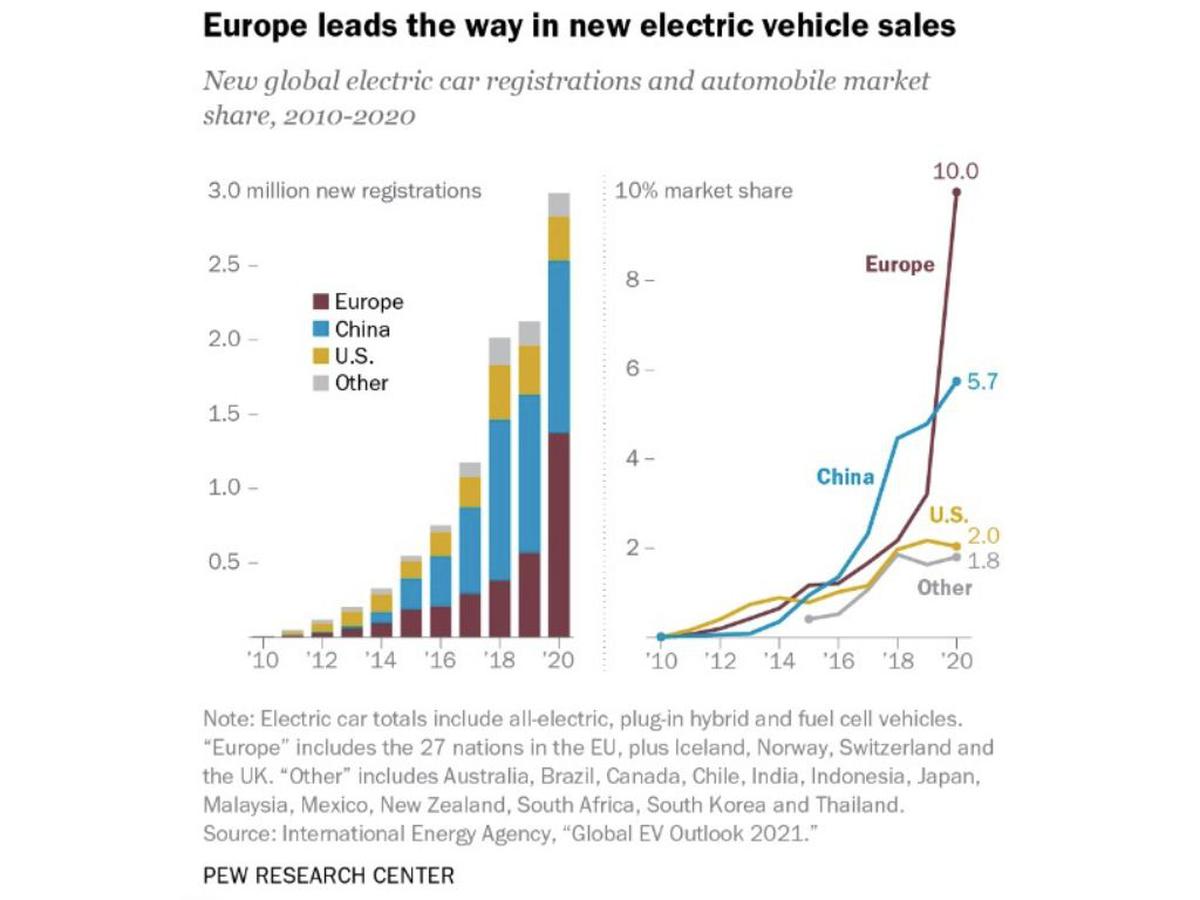Explained | Why is Europe worried about U.S Inflation Reduction Act?

The story so far: French President Emmanuel Macron, the first foreign leader to be given a state dinner at the Biden White House on December 1, used his two-day visit to the United States to question Joe Biden about clean energy subsidies in the new Inflation Reduction Act (IRA), which European countries believe are discriminatory to non-American companies. Addressing lawmakers at the Library of Congress, Mr. Macron described the IRA as “super aggressive” toward European companies, according to a participant in the meeting.
The IRA subsidies have riled up the leaders of several European Union countries, including France and Germany, and have also raised concerns in South Korea and Japan that the Act’s “discriminatory” provisions contravene World Trade Organisation rules. The EU has asked for a swift resolution of its concerns before the Act kicks in on January 1 next year.
What is the U.S. Inflation Reduction Act?
Signed into law on August 16, the Inflation Reduction Act is a $430 billion package of federal spending, tax breaks, credits, and levies, aimed at fighting climate change, reducing healthcare costs, and making large corporations pay their “fair share” in taxes. The Act is a scaled-down version of Mr. Biden’s ambitious Build Back Better plan that did not get the senate’s approval at the end of 2021.
Besides its goal of bringing down inflation, the Act is the biggest climate action package in U.S. history— earmarking $370 billion for climate-focused funding and investments aimed at cutting emissions by around 40% below 2005 levels by 2030.
In terms of healthcare-related provisions, the Act extends expiring Medicare subsidies to 13 million Americans and aims to bring down the cost of prescription drugs, for which Americans pay two to three times more than citizens of other countries.
The Act also aims to make the U.S tax code fairer—the White House factsheet on the IRA points out that the top 1% of earners are estimated to evade $160 billion in taxes each year. The IRA imposes a minimum tax of 15% on America’s wealthiest, most profitable corporations. Notably, by raising corporate taxes, the whole IRA package is paid for, and is estimated to bring a deficit reduction of around $237 billion.
Combining climate policy with industrial policy
Marking a change in the U.S. climate policy, the IRA combines climate action goals with industrial policy, aiming to transition to clean energy by incentivizing local manufacturing of renewable energy components. . It also seeks to reduce American reliance on China for materials and components for the clean energy industry. A Biden administration review of the U.S.’s clean energy supply chains last year revealed heavy reliance on China and showed that American clean energy manufacturing was behind EU countries in key areas, a Washington Post report noted.

Value of incentives and funding available to companies and consumers under the IRA. Source: McKinsey & Company
In order to bolster clean energy development in the U.S, the IRA provides the following consumer and industry-side incentives:
Electric Vehicles (EVs): Transportation accounts for a quarter of America’s greenhouse emissions. To promote the use of electric vehicles and to secure domestic supply chains for their manufacturing , the federal tax incentive policy for EVs has been changed.
Now, only passenger EVs assembled in North America (U.S., Canada, and Mexico) are eligible for a $7,500 tax credit incentive. Those who buy used EVs will also be eligible for $4,000 tax credit— only if 40% of the critical minerals (like lithium) used in electric car batteries in 2023 are extracted, processed, and recycled in North America or a country having a free-trade agreement with Washington. By 2026, this tax credit will be available only if 80% of the critical minerals are sourced from these territories.
50% battery components also need to be manufactured and assembled in North America or specified countries to avail tax credit benefits. This will increase to 100% by 2028. Starting from 2024 and 2025, tax credit benefits will not be available if minerals or battery components respectively are sourced from a “foreign entity of concern”.

Progression in share of domestically sourced components in EVs till 2030 to make them eligible for U.S. state subsidies. Source: McKinsey & Company
The Act offers $10 billion investment tax credit to build clean technology manufacturing facilities, like those making electric vehicles or solar panels, $2 billion in grants for refurbishing existing auto manufacturing facilities to make zero-emission vehicles, and up to $20 billion in loans to build new EV manufacturing facilities. Notably, the official cap of 200,000 EV sales per automaker will also be removed from January 2023; many big carmakers like Tesla and General Motors had already maxed out or were quickly nearing the arbitrary cap— which meant more consumers were unable to avail the tax benefits.
Renewable energy: The IRA provides a tax credit of 30% of the cost of building or upgrading factories for renewable energy components, and gives extended, new production and investment credits for renewable energy generation from sources such as solar, wind, hydrogen and nuclear technologies. Credit incentives are also in place for biodiesel and sustainable aviation fuel. It also offers billions in federal procurement for American-made clean technologies. It introduces a fee on methane emissions from industries and incentives for technologies which curb such emissions.
Power costs: The package offers 10 years of consumer tax credits to make American homes energy efficient and clean energy dependent, making heat pumps, solar panels and so on affordable.
However, in order to get key Democrats, such as Joe Manchin on board to get the Bill passed, the Biden administration did makesome compromises to its sweeping ambitions for climate action, directing support to fossil fuel development by protecting federal drilling auctions and facilitating upgrades of coal and gas facilities.
What are Europe’s concerns about the IRA?
Europe’s high energy dependence on Russia led to energy shocks in the wake of the Russia-Ukraine war, leading to energy shortages, skyrocketing power prices, and a harsh winter. EU countries also need to meet their declared UN climate targets.
Europe is concerned about the IRA’s possibly “discriminatory” provisions and seeks a quick solution before they come into effect at the start of 2023.
The EU’s 27 member countries fear that the IRA tax credits and subsidies to EVs and other green product makers in North America and free-trade partner countries put European companies at a disadvantage and may push them to move critical parts of their supply chains to America.

Comparative growth in EV adoption and market share in Europe, China and America. Source: Pew Research Centre
The EU’s own new green plan ‘Fit for 55’ is targeting to cut CO2 emissions from cars by 55% and vans by 50% by 2030 and all emissions from cars by 2035. For this, it will need to significantly increase its uptake of electric vehicles.
Although China dominates the EV purchasing market, Europe has also been posting high growth in EV demand vis-a-vis the total auto demand, even faster than the U.S. According to the International Energy Agency (IEA), nine of the top 10 countries by share of EVs in the total car stock are in Europe.
To meet its emissions targets, the EU will benefit from its local automakers ramping up manufacturing, but the IRA raises fears of automakers moving to the U.S. Mr. Macron in November hosted several European CEOs of energy, auto, and pharma companies to convince them to not move manufacturing to America.
Europe’s fears may not be unfounded as several automakers, battery makers and energy companies have already made announcements or shown interest in setting up shop in America. South Korea and Japan have similar concerns too. For instance, Reuters reported that Swedish battery maker Northvolt was set to establish a lithium-ion battery factory in Germany, Europe’s top car manufacturer, but after the IRA, the company’s CEO Peter Carlsson said that it could get up to 800 million euros ($836 million) in U.S. state subsidies, which was nearly four times what the German government was offering. South Korean motor giant Hyundai said it would speed up the opening of its EV manufacturing plant in the U.S. after the IRA was introduced. Italian power company Enel said in November that the IRA was more efficient than European Union aid to facilitate domestic production of energy sector components.
The EU’s Trade Commissioner Valdis Dombrovskis said in November that many green subsidies in the IRA “discriminate against EU automotive, renewables, battery and energy-intensive industries”, calling this a “serious concern for the EU.” Mr. Dombrovskis pointed out in October that while the EU provides “un-discriminatory” subsidies for EVs, including those made by American automakers like Tesla, EU electric cars will not get similar subsidies in the U.S.
EU members consider around 200 billion euros ($207 billion) of the subsidies are for locally produced content provisions, which they say potentially violates World Trade Organization (WTO) rules. Washington. A Reuters analysis pointed out that to compound worries, EU state aid rules do not allow member countries to offer as generous tax breaks to companies looking to set up shop as those being offered by the U.S
EU established a special task force last month to discuss the IRA and European concerns about discrimination. French President Macron has attempted to revive calls for a “buy European act”, which could make government procurement and subsidies contingent on manufacturing on the continent. French Finance Minister Bruno Le Maire in late November accused the U.S. of making a “Chinese-style” industrial policy that would discriminate against non-American companies.
The German Finance Minister Christian Lindner said last month that he did not think Washington had “completely grasped how great our concerns about the consequences are.” However, instead of establishing “tit-for-tat” measures, Europe should engage in “dialogue” with the White House to express concerns and find common ways to meet collective economic interests, he said.
The EU’s Competition Commissioner Margrethe Vestager, while acknowledging potential damage for European businesses, has cautioned against unleashing a subsidy race or a “trade war” with the U.S. amid already fragile global geopolitical conditions, that don’t allow for “big democracies to have a fallout”.
What is the Biden administration’s stand?
At a joint press conference during Mr. Macron’s visit, U.S. President Joe Biden said that there was room for “tweaks” in the IRA to “make it easier for European countries to participate” and it was “never intended” to exclude cooperating countries, but added that “US makes no apology” for promoting American manufacturing and would continue to create jobs for its people.
While Mr. Biden said he would not take these steps at the “expense of Europe,” he did not say how he would address European concerns. Congressional Democrats have expressed unwillingness to reopen the text of the law. A legislative change in the IRA also seems unlikely as Democrats may not find support for the law in the new Senate which has more Republicans after the midterm elections.

